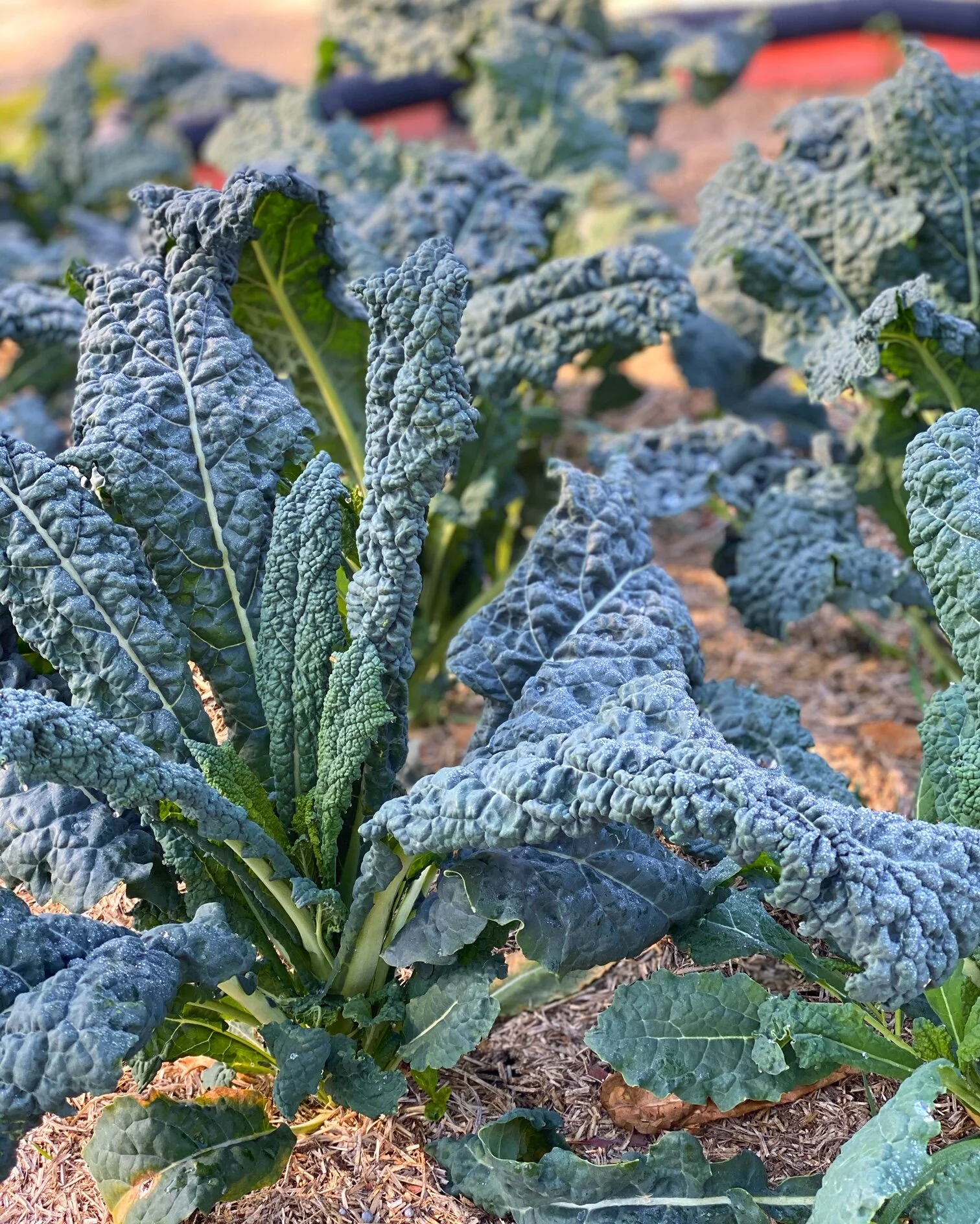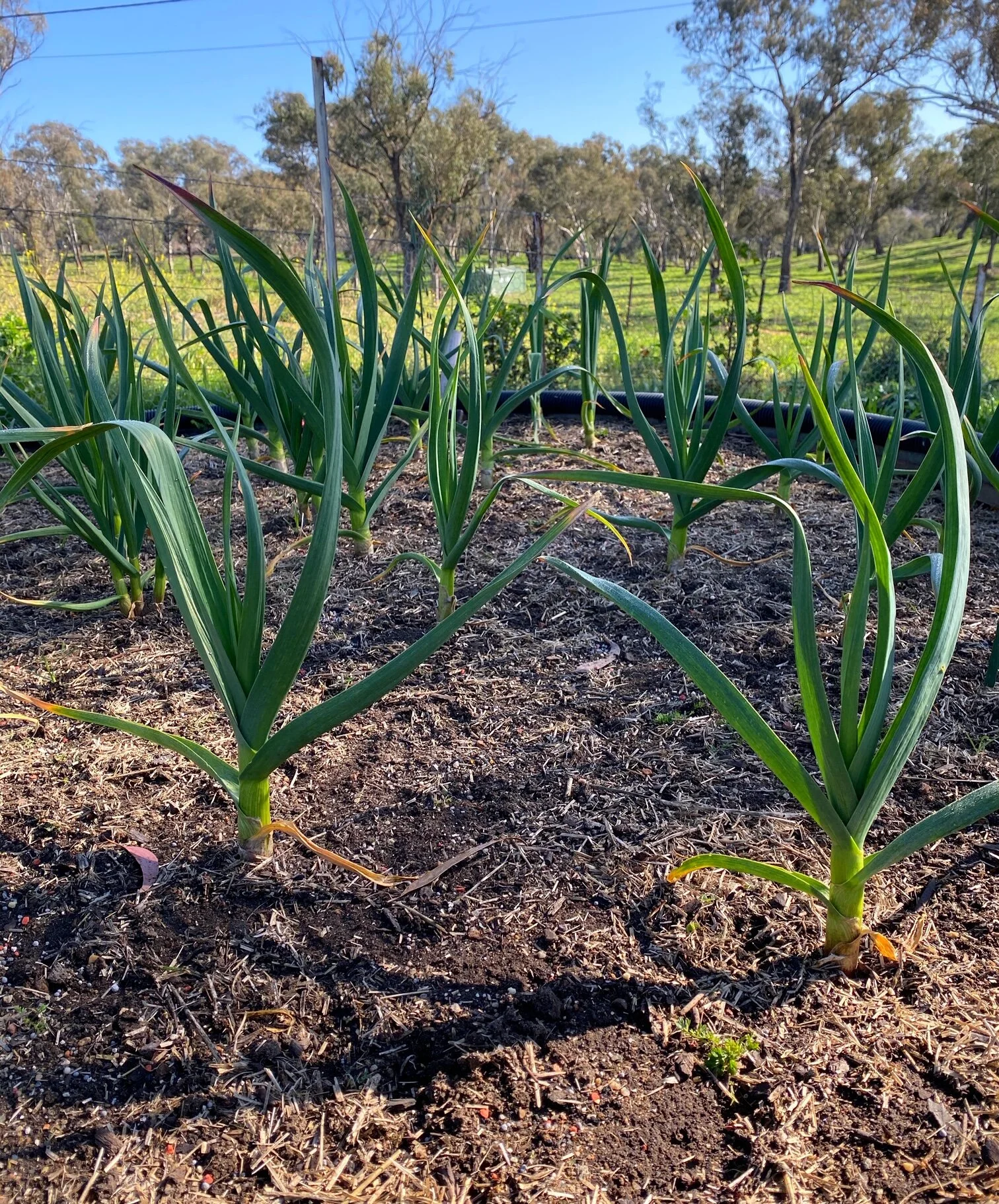IT AIN’T EASY BEING GREEN
Don’t let the photo above fool you. Yes, it is our homegrown Tuscan kale. But I do not have a green thumb. At all. I’ve killed succulents before, that’s how terrible I was. When I first moved onto The Farm, I was apparently bad at watering the vegetable garden, if that’s even a thing. (It is.) But thanks to some, ahem, coaching from The Roommate, I’ve come a long way, and I’ve found that I actually really enjoy spending the time outside taking care of our little green babies. Mind you, he does almost all of the heavy duty labour, including making the actual garden beds, turning over the soil, making the compost, planting the seeds/seedlings, most of the watering, the pruning, the fertilizing, the bird/insect proofing…the list goes on. It’s because of him that I have such an abundance of ingredients to choose from, so full credit goes to The Roommate for all of his time and efforts, especially when all of this happens after work hours and on weekends.
But I help! Having crops constantly on rotation requires a team effort, even if it is a lopsided one. And trust me when I say it was a massive learning curve. I always thought you just plant the seeds, water them, pray for sunshine and hope for the best. Turns out, not even close. Here are some things I’ve learned since adopting the farm life:
1. NOT ALL PLANTS WANT THE SAME BEGINNING
Some plants do better when they’re started off indoors or protected from the elements before being transplanted into the ground as seedlings. For example, most leafy vegetables do well this way, especially if where you live still gets a bit of frost at night. We tend to start our lettuce, various Asian greens, and kale in little seed trays until they’re ready to be transplanted - typically when the plants are a few centimetres tall and the first leaves start showing. You do need to make sure that you “harden off’ the seedlings though before transplanting - in a nutshell, you want to slowly introduce them to the natural outdoor elements so that they can get used to what will become their new environment. This process takes about a week, with the seedlings spending incrementally longer periods of time outdoors in the sun, and then eventually overnight as well. (All of this sounds pretty pro for a city girl right?)
Other plants, meanwhile, should be sown directly into the ground. Like carrots, radishes, beets, and spinach. They don’t transplant well, but things like radishes grow easily and rapidly (in fact it’s one of the few vegetables you can grow year round) and don’t really requiring transplanting. Not only that, but it’s not as simple as throwing a bunch of seeds into some dirt once the frost has passed.
2. THERE’S A RIGHT MOON, AND A WRONG MOON
If you’ve ever planted something and wondered why it’s either not growing properly, or has gone to seed too early, it could be because you’ve planted it in the wrong moon phase. That’s right. Moon phase planting. When I first learned about this, I was tempted to dismiss it as some kind of weird old wives’ tale, imagining ancient hippies dancing around in the moonlight with their plants. Obviously, I was wrong. And when we experimented with moon phase planting, lo and behold, they germinated more quickly, were healthier, and didn’t go to seed as quickly as before. Ancient wisdom, you win again. I’ll write in greater detail about moon phase planting another time, but basically the moon’s ever-changing gravity pull affects the moisture that’s drawn up or down into the seed, similar to the tides.
Lettuce that was planted in the correct moon phase - show stopper, right?
3. THERE IS A WRONG WAY TO WATER YOUR PLANTS
I know, right? I mean, when it rains, all the plants get watered the same way. So why doesn’t the same logic apply when I’m using a garden hose? Well, for one thing, when it rains, there’s cloud cover, and the temperature generally cools off a little, so there’s little to no chance of the sun burning the wet plants. Think about a hot summer day, when you’ve gone for a swim and you come back out into the sun - your skin dries much more quickly, and the sunshine starts to burn your skin. Same concept - plants can get sunburn too! Lettuce leaves in particular are sensitive to this, as are citrus tree leaves, eggplant leaves and some herbs. For this reason, it’s best to water gently around the base of the plant, letting the water soak in slowly. Also, for the love of god, don’t water your plants (edible or otherwise) in the middle of the day when it’s hottest. Wait until late afternoon or dusk, or do it first thing in the morning while it’s still cool. Other plants are fine with their leaves being showered - usually hardier greens like kale, silverbeet (chard), and onions. Radishes and carrots don’t mind a sprinkle either.
4. SOMETIMES, BIGGER IS BETTER
Plant genetics are an interesting thing. Especially when they’re grown directly from the last generation. For example, both garlic and potatoes (two of my ultimate favourite foods, together and separately) are grown from the actual cloves and potatoes themselves. The garlic in particular was a highlight, especially given that we used our own cloves from last year’s crop, which in turn was from a massive bunch of beautiful Tasmanian garlic we brought home with us the year before when we were last there. But the new batch will only grow as big as the product you put into the ground. So, make sure you save all your largest cloves for planting - and leave the skins on! Likewise with the potatoes - we used really old, near-mummified seed potatoes (long story, but basically my faulty memory was…well, at fault) and ended up with hundreds of baby potatoes instead. Not complaining, they were still delicious.
The prize crop - homegrown Tasmanian garlic.
One of the happiest days of my life - potato harvest day.
These are probably the four most fundamental learnings I’ve taken on since adapting to farm life. The lazy girl in me would normally balk at the amount of work and consideration that’s required in maintaining a vegetable garden (it is indeed not easy being green), but the emerging farmer in me would say that the rewards definitely warrant the effort, like most things in life. And even if you start small, and stay small, with some potted herbs for example, it can be so gratifying watching something grow into abundance because of your nurturing. Kind of like a baby, except you know…you don’t eat your baby.




